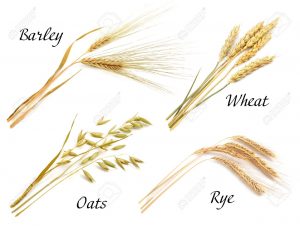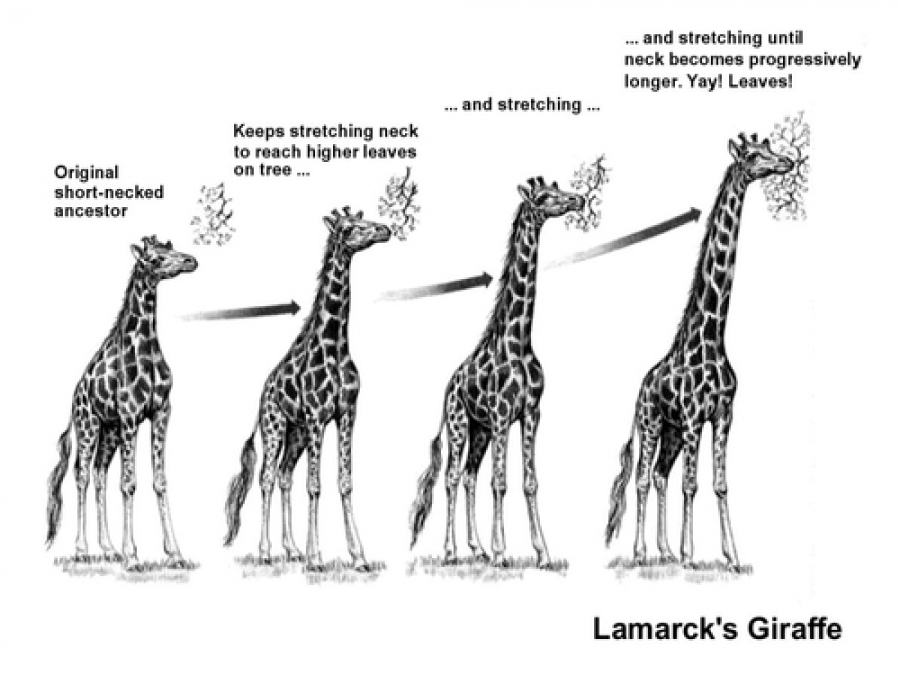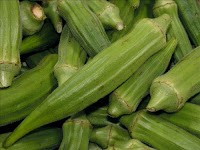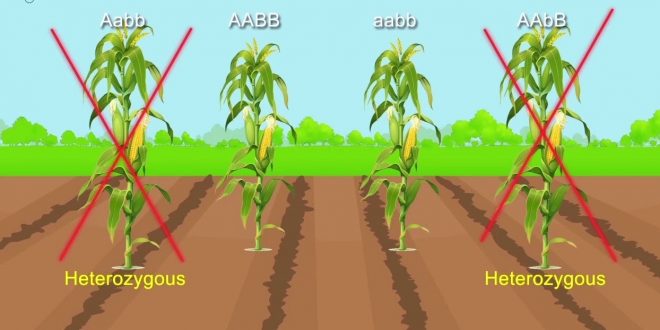Plant improvement must have been started with the primitive man changing his mode of life from a nomad to an agriculturist. To have a crop in the next season, he had obtained seeds from the first crop. For this, unconsciously the process of selection is practiced for a long time and becomes a method of crop improvement. It is, therefore the oldest breeding method and is the basis of all crop improvements. It is the simplest and oldest breeding method.
It is defined as favors and further propagation of some plants having more desirable characters than others or preservation of certain individual plants of desirable characters than others or preservation of certain individual plants of desirable characters.
Selection is naturally based on phenotype. It’s finally yield an improved line of variety. The newly selected lines are tested for yield and other traits and compared with the existing best strains which is released as a new variety. The process is known as Evaluation where seeds are produced from this variety are multiplied and distributed.
In this article, types and procedures of selection process (Natural &Artificial) will be discussed briefly.
History
The selection process first used in Germany for improving the sugar beet and small grains such as rye and wheat. For this reason, it’s also called as German method or German method of broad breeding.
- In 1843, Le Couteur published his results in selection in wheat.
- About the same time, Patrick Shireff practiced individual plant selection in wheat and oats.
- In 1857, Hallet practiced single plant selection in wheat, oat and barely.

Types of selection process

Best safe and secure cloud storage with password protection
Get Envato Elements, Prime Video, Hotstar and Netflix For Free
Best Money Earning Website 100$ Day
#1 Top ranking article submission website
There are two types of selection:
1. Natural Selection.
2. Artificial selection.
And artificial selection has three modes:
1. Mass Selection.
2. Pure-line Selection
3. Clonal Selection.
Natural Selection
Selection which operates in nature without human interference is called natural selection. Natural selection is a rule in the nature and has resulted in evolution. According to it, the fittest can survive and rest wipe out. It’s a process that favors heritable traits that increase the survival chances of an organism, allowing the organism to reproduce more!

The five key points of natural selection are competition, adaptation, overproduction, speciation. “Survival of the fittest” is a phrase that originated from Darwinian evolutionary theory as a way of describing the mechanism of natural selection. Natural selection is the process of naturally “Screening traits”(characteristics) within individuals within a species for or against a certain outcome. It can affect morphological, physiological, biochemical and anatomical characters, however natural selection can only act on traits which can be genetically inherited and which are expressed.
In summary, natural selection acts on the phenotype of an organism. The theory states that if an organism has a trait that is of benefit, then it will have a greater chance of reproducing and passing on that gene. However, if an organism has a gene which is causing it disadvantage, then the organism will die and not pass on that gene.
Examples of Natural Selection:
- Venus’ Fly Trap plant (or Dionaea muscipula in fancy Latin) is a carnivorous plant and one of the most common examples of natural selection in plants. Normal plants get vital nitrogen from the soil, but this beauty had to get creative because there’s no nitrogen in the soil where it grows. So now it looks like something from a Steven King novel.

- snap trap plant that evolved from another carnivorous plant Drosera, which uses a sticky trap to catch prey. This plant consumes large terrestrial bugs, which is why it evolved to snap rather than use the sticky trap. For instance, Drosera uses sticky trap because it catches small bugs and spiders. It is interesting that carnivorous plants evolved as a result of adaptation to the environment. The soil where they grow lacks nitrogen, which is vital for plant survival. The insects they prey on provide the nitrogen plants need.
- Many flowers evolved to smell a certain way to attract pollinators – animals that basically ‘help’ plants make fruits or seeds by transporting pollen. For instance, carrion flowers smell like rotten meat because their pollinators are mostly scavenging flies and beetles, so to reproduce they needed to evolve scent that attracts these animals
- Nuts have developed hard shells to deter birds.
- Cactus – this plant developed needles to protect from animals
- Giant hogweed – highly poisonous plant that evolved as a defense mechanism. This also refers to other toxic plants.
Benefits of natural Selection
In case of sexual reproduction,
- It produces variation in the offspring.
- The species can adapt to new environments due to variation, which gives them a survival advantage.
- A disease or change in environment is less likely to affect all the individuals in a population.
In case of asexual reproduction,
- The population can increase rapidly when the conditions are favorable.
- Only one parent is needed.
- It is more time and energy efficient as a mate is not required.
- It is faster than sexual reproduction.
Limitations of natural selection
In case of sexual reproduction,
- Time and energy are needed to find a mate.
- It is not possible for an isolated individual.
In case of asexual reproduction,
- It does not lead to variation in a population.
- The species may only be suited to one habitat.
- Disease may effect all the individuals in a population.
Artificial selection
Artificial selection is the intentional reproduction of plants that have desirable traits. This is done by man, with the purpose to ensure food security and producing new varieties of plants that are higher yielding, resistant to pests and diseases, drought resistant and regionally adapted to different environments and growing conditions. This would ensure that the speed and efficiency of production and quality of crops are maximized. Thus take a relatively short amount of time as compared to the natural selection. Artificial selection is also known as selective breeding.

Examples of Artificial selection
1. Guayule: A rubber-producing plant from mexico, guayule (Parthenium argentum), was hybridized with their northern relatives to produce hybrid plants that could transfer cold tolerance to guayule.
2. Okra: Okra, also known as Lady’s Finger, (Albemoschus esculentus) was prone to yellow vein mosaic disease, where fruits produced become small and yellowish green. A new variety of okra was developed by hybridizing the plant with hibiscus.

3. Wild Mustard: The Brassicas are great examples of artificial selection. Cabbage, broccoli, cauliflower, Brussels sprouts, collards and kale are all members of the same species, Brassica oleracea.

Advantages of artificial selection
- Artificial selection can add new genetic varieties to species.
- Artificial selection can help to eliminate problematic diseases.
- It helps to provide a food chain with better sustainability.
- Artificial selection can be used to refine a species.
- It gives us an opportunity to focus on specialization.
- Due to Crossbreeding in artificial selection allows for genetic diversity to continue.
- Improvement of wild and local cross pollinated crops.
- preservation of extinct crops.
Disadvantages of artificial selection
- It creates a population of plants or animals that have very similar genetics.
- There is no control over genetic mutations when artificial selection.
- A decrease in genetic diversity creates a higher risk of mutation.
- Artificial selection changes the evolution of each species.
- This practice increases the risk of inbreeding.
Reference
- https://homework-lab.com/study-tips/natural-selection-examples-evolution-guide
- H.k. chowdhury Elementary principles of plant breeding.
Revised by
- Saifun Nahar Smriti on 21 August, 2020.
 Plantlet The Blogging Platform of Department of Botany, University of Dhaka
Plantlet The Blogging Platform of Department of Botany, University of Dhaka





